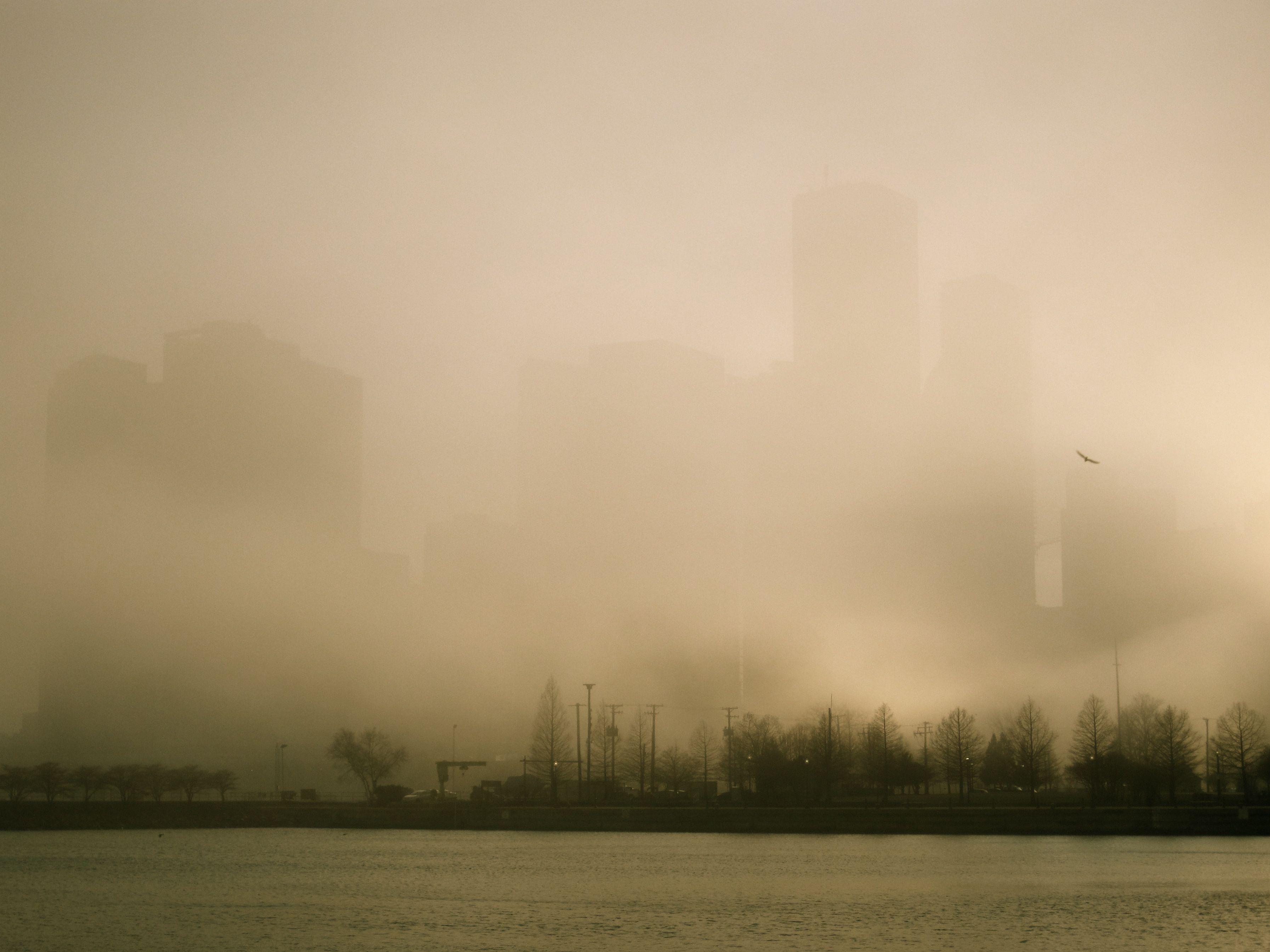47.WHY IS THERE FOG OVER LAKES?
Fog, dew, and clouds are all related. In fact, just one change in the conditions—such as the presence or absence of air currents—could make the difference as to whether there will be fog, dew, or clouds. Let’s see why this is so, and why fogs appear in certain places.
Fog particles are small, less than 0.001 millimeters in diameter. When you have a dense fog and can’t see in front of you, it’s because there may be as many as 1,227 of these particles in one cubic centimeter.
In order for fog to form, the moisture must leave the air and condense. This means it must be cooled in some way, because cooler air cannot hold as much moisture as warm air. When the air is cooled below a certain point, called the dew or saturation point, then fog starts to form.
Fog formation also requires that the cool air be mixed into warmer air by an air current. If you have still air, the cooling will take place only near the ground and you will have dew. When there are rapidly rising air currents, the cooling takes place high in the air and you have clouds. So the air currents that mix the cool air into the warmer air must be gentle in order to create fog.
One of the conditions in which this happens is when a mass of warm air passes over a cold land or a cold sea. Or it could be the opposite, with cold air passing over warm water. This last condition is what happens during early morning in the autumn near bodies of water such as lakes and ponds. The cold air and currents of warm air mix gently and you get those familiar fogs which seem to hang in mid-air over a body of water.



Leave a Reply